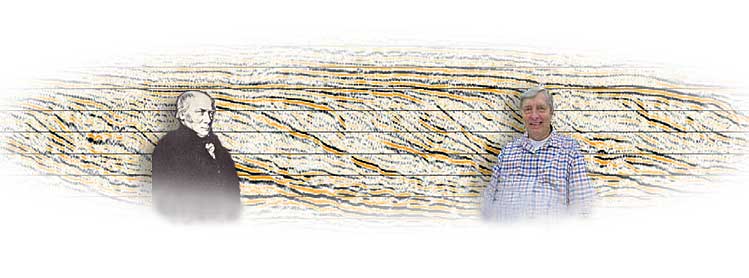
Sequence stratigraphy gained prominence in 1977 when Vail and his co-workers published on stratigraphic techniques they had developed at Esso Production Research to interpret seismic cross-sections. They recognized that signals of eustatic movement were expressed by major unconformities and caused a revolution in stratigraphic analysis. They assumed that continuous seismic reflectors on acoustic geophysical cross-sections are close matches to the chrono, or time boundaries like bedding planes and unconformities. They had established that unconformities were clearly recognizable on marine seismic sections and assumed that like the unconformities of the Paleozoic identified by Wheeler (1958), Sloss (1963, 1972) and Sloss and Speed (1974) were the products of worldwide changes in sea level or eustasy. They noted that the unconformities enveloped packages of reflectors and called these seismic sequences. They demarked these with seismic reflectors onlapping and terminating either against the lower unconformity surface or against each other.
Using techniques developed by Schuchert (1916), Umbgrove (1939) and Wheeler (1958), they assumed that the position of onlapping seismic reflectors was controlled by the base level of the mean high water mark. Thus a sediment (or seismic) encroachment chart could be drawn that shows how far the sediment wedge of submarine, coastal and alluvial sediment (represented by the seismic) has onlapped a basin margin (Vail et al., 1977). A sediment (or seismic) aggradation chart was also constructed that shows the vertical component by which onlapped seismic reflectors had climbed or fallen (Fig. 4c) (Vail et al., 1977). They then correlated the cycles of relative changes of sea level at multiple locations and construct charts that incorporated the occurrence of global sediment (or seismic) onlap cycles. Using the aggradational measurements from the seismic, Vail et al, estimated the magnitude of relative sea-level excursions. However it was recognized the position of an eustatic event had on the continent is complicated by the local effects of tectonic subsidence (Bally, 1981; Watts, 1982; Thorne and Watts, 1984). This may explain why sea-level curves for the Jurassic compiled by Hallam (1981) and Vail and Todd (1981) from different data sources record different positions for the same sea-level stands. Posamentier and Allen (1999) confirm this effect of local tectonism with a block diagram of a margin that has different tectonic signals along its length and consequently different relative sea level positions.
Following the Vail et al (1977) publication, in 1988 Jervey published a paper that revolutionized the way we look at the relationship between tectonics, eustasy and sedimentation. He did this using a simple 2D sedimentary simulation. At the same time our understanding of systems tracts expanded with the publications on these in Baum and Vail 1988, Donovan et al 1988, and Loutit et al 1988.